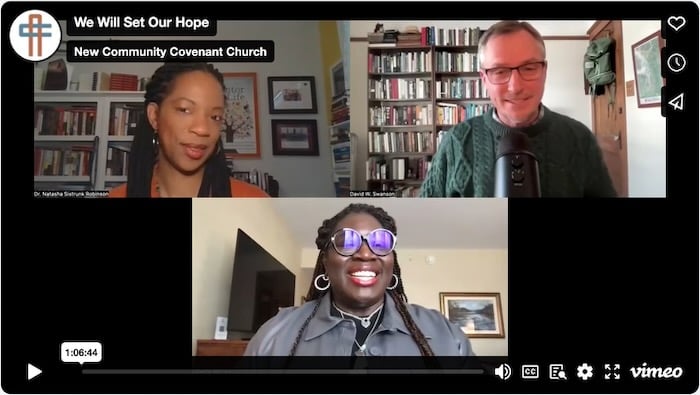Reconciliation and the Preferential Option
Bearing witness to the hierarchy-upending kingdom of God

Last week I began a thinking-out-loud series focused on what I think are the “critical characteristics of racially reconciling congregations during the chaotic days we’re living through.” I began with the new creation foundation that I believe is essential for any Christian understanding of racial reconciliation and justice.
Today, borrowing from Gustavo Gutiérrez, I want to suggest that racially reconciling congregations will exhibit a preferential option for those who’ve born the brunt of exclusion and exploitation from our racialized society. (Thanks to my friend Mark for suggesting this paradigmatic language.)
For Christians, this is actually a pretty basic assumption about how we organize our collective worship and service. The Old Testament includes gleaning laws and rhythms of Sabbath which prioritize the poor and vulnerable. Jesus constantly rearranges agendas and refocuses attention around the experiences of his marginalized neighbors. The early church upended norms to ensure that both Hellenistic and Hebraic widows were cared for, they were called to account for leaving their society’s socioeconomic inequities unchallenged in the congregation, and were warned against economic exploitation. To say that a multiracial congregation will prioritize its racially minoritized members is to say only the most obvious thing about Jesus-centered community.
There are many ways to express this preferential option. We might begin by evaluating the use of power in a congregation. Far too many multiracial churches are quick to place people of color in visible positions while, behind the scenes, it’s white leaders who are making the plans and spending the money.
Another dynamic to notice is whether a majority culture church has disguised itself behind a multicultural facade. In my experience, this is an ongoing process; given its pervasiveness, white culture easily assimilates to culturally diverse spaces. This means a racially reconciling congregation will regularly reflect – concretely and specifically – on their cultural hospitality.
By implication, racially privileged people, particularly white people, will find multiracial congregations to be a new, often uncomfortable experience. Having inhabited a culture which has mostly been constructed with our well-being and contentment in mind, the norms and assumptions of a genuinely multicultural community will be strange to us. This is a good thing! To follow Jesus in his last-shall-be-first kingdom, those who’ve been deeply formed by corrupting racial privilege need to discover the blessing of loving discomfort.
Exhibiting a preferential option for those who’ve been racially exploited and excluded will differ from context to context. But behind these different expressions can be found the same assumption about how the love of God in Christ has upended every one of this world’s dehumanizing hierarchies. May our racially reconciling churches make it plain.
(Photo credit: Claire Thibault)
We Will Set Our Hope

It was so good to be in conversation with Latasha Morrison and Dr. Natasha Sistrunk Robinson earlier this week. Here’s the video if you missed it. We’ll be back on Thursday, February 20 at 12:00 ET to discuss the themes from Latasha’s newest book, Brown Faces, White Spaces. I’ll share more info and the registration soon.
Faithful Mission Through Chaos
This week Missio Alliance published an article about the church’s mission that I’d been working on for a while.
As we enter the second quarter of the 21st century, it can seem like everything has changed for the church in North America. These have been chaotic years during which long-held norms have been upended and assumptions about ministry have collapsed. The #churchtoo movement revealed persistent sexism and abuse perpetrated against women by many male pastors and ministry leaders. Nationalistic God-and-Country assumptions have infiltrated and spread through many congregations. Church attendance continues to decline even as, in a surprising reversal, more young men than women are affiliating with local churches. Many Christians of color have grown increasingly wary of evangelicals even as some non-Christians have adopted the label as a political identity. The re-inaugurated U.S. president can count on unwavering support from a majority of white Christians despite his criminal conviction, numerous sexual assaults, and continued xenophobic and racist inclinations…
But while the church’s mission remains the same, its circumstances don’t, and I’ve been wondering about the particular expressions of mission which will be important to emphasize in the tumultuous days ahead.
You can find part one and part two at the Missio website.
Whitworth Ministry Summit
Summer seems a long ways off, but maybe you’d like to start making plans to join some amazing people in Spokane, WA in June for the Withworth Ministry Summit. I’ll tag-team with Dr. Brenda Salter McNeil and Jer Swigart to speak about being repairers of the breach. I’ve been to the summit once before and am so looking forward to being back. Maybe you can join us?
The View From Here

It continues to be cold here in Chicago, though I think New Orleans got more snow this week than we did. On Sunday I walked out to the lake with our youngest son to check on the ice build-up. It’s one of my favorite wintertime activities because the lakeshore looks different each time we visit.